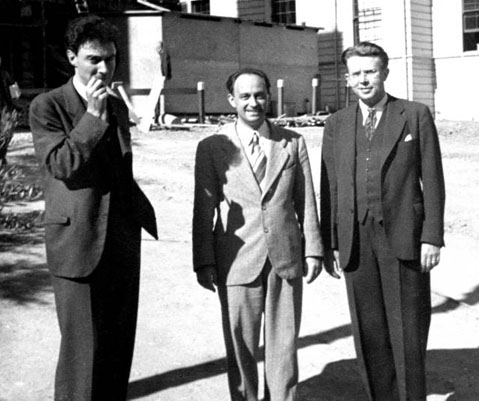
From left to right, J. Robert Oppenheimer, Enrico Fermi, and Ernest Lawrence, three key scientists who built the atomic bomb.
Source: Oppenheimer Fermi Lawrence, Wikimedia

From left to right, J. Robert Oppenheimer, Enrico Fermi, and Ernest Lawrence, three key scientists who built the atomic bomb.
Source: Oppenheimer Fermi Lawrence, Wikimedia
To get a detailed summary of important events and issues surrounding the decision to use the atomic bomb, go to the following link and read the article by Truman's assistant press secretary and later his personal assistant, Ebon Ayers. Ayers' diary entries and articles give some of the most valuable first-hand information that we have today to understand the thinking of those in power during the atomic bomb's development and use. Interactive popup. Assistance may be required. to read an excerpt from Ayers' diary.
In July 1945, although Japan had been seriously weakened, [Stimson] said there was no indication of any weakening in the determination to fight rather than to accept unconditional surrender. Estimates of the War Department General Staff indicated that the Japanese army had a total strength of about five million men, and there was a possibility that the Japanese government might determine upon resistance to the end, which would face the Allies with the task of destroying an armed force of five million men and five thousand suicide aircraft. Plans of the armed forces for the defeat of Japan had been prepared without reliance upon the atomic bomb. They included an intensified sea and air blockade, strategic air bombing through the summer and early fall to be followed on November first by invasion . . . . The total United States military and naval force of five million men would be involved. He said they estimated that if we should be forced to carry this plan to a conclusion with major fighting it would not end until the latter part of 1946 at the earliest.
After reading the article, answer these questions in your notes to reflect on your understanding of the perspective shared by the Manhattan Committee and the U.S. military leaders.